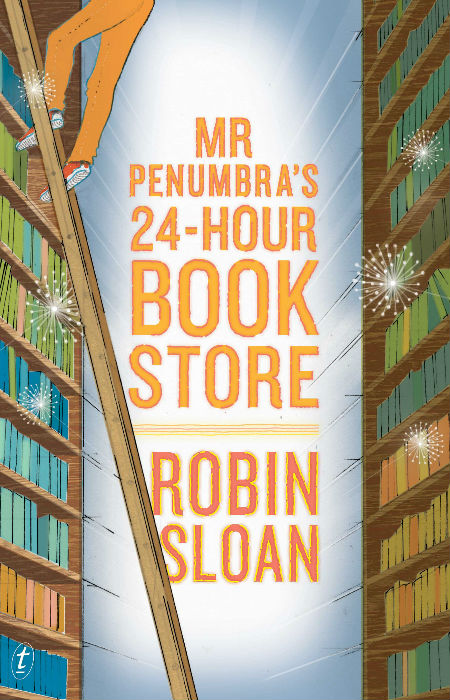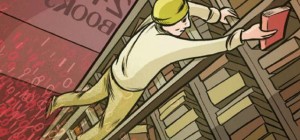
We seem to live in an age where mystery is a rare and vanishing commodity.
But just when it threatens to wink out of existence, a victim of a culture where everything appears eminently explainable, along comes Mr Penumbra’s 24-Hour Bookstore by Robyn Sloan to the rescue, uniting the mystical and the digital in one gloriously nerdish union.
This highly engaging story begins when Clay Jannon, laid off from his job at NewBagel where he was the social media voice of the company that failed to survive the Global Financial Crisis of 2008, takes on a job at a dusty, old bookstore in San Francisco.
Desperate for a job, he doesn’t mind the odd overnight hours, nor the strange old man, Mr Penumbra, who runs the bookstore during the daylight hours and hires Clay based on a simple question/statement – “Tell me about a book you love.”
No ordinary bookstore
Discovering quickly that this is no ordinary bookstore, with its high wall of books full of complex code that Clay christens the “Waybacklist” and eccentric customers who arrive in the middle of the night requesting very specific titles that don’t appear on any book databases, he relishes the chance to solve the mystery with which he is presented.
And it is a glorious ride for the most part uniting the world of literature and real world physical books with the computational might of Google and the emerging digital world.
There is covert activity aplenty, secret medieval orders, black robes and hidden chambers, and a pellmell dash across the United States, all in pursuit of a noble quest to discover the truth, whatever that may be.
Utilising the host of decidedly high-tech skills that his friends, both old and new, possess (including possible girlfriend and Google true believer, Kat Potente), Clay quickly decides that the best way to crack the code is to submit the old and the supposedly anachronistic to the shiny new digital toys threatening to supplant them.
In that sense at least the book falters just a little as the might of modern computing is presented as the solution to all our ills, with some parts of the novel reading almost like an advertisement for Google.

True to his self-appointed calling
But at its heart, it remains true to one young man’s enthusiastic belief that it is possible to have both mystery and knowledge.
His friends share that vision too, but for wholly different reasons.
Kat, who works for Google, is a true believer in technology and sees solving the mystery via the computing power at her disposal as vindication of man’s unstoppable upward climb to technological Nirvana.
Neel, a startup entrepreneur and Clay’s fantasy roleplaying partner and friend, sees business opportunities while Mat, Clay’s housemate, and a gift special effects technician is excited by the chance to use his skills in a whole new arena.
Whatever their motivation though they embrace the mystery and its, in their eyes, inevitable solution (leaving aside the fact that the secret order in the book, The Unbroken Spine hasn’t cracked the code in 500 years of trying) and embark on their quest with alacrity.
Technology-centric though it is, the book is nonetheless a love letter to the thrill of the unknown, to grand adventures and exciting quests.
People you care for
It is helped along by characters for whom Sloan clearly has a great deal of affection.
Clay, for instance, while capable and determined, and with a devilishly dry sense of humour and a love of wry observation, nevertheless has an air of Charlie Brown-ness about him, even if unlike Schultz’s anti-hero he manages to connect with the ball far more than he misses it.
He sees his journey deeper and deeper into Mr Penumbra’s richly layered world as akin to the fantasy games he plays with his friends believing that technology will ensure that his quest is successful in the end.
And in that vein the book is a paean to the rich possibilities that await in our still forming and ever possible digital world.
While Sloan is unashamedly a modernist, coming down firmly on the side of technology as our ultimate ally, he values too the old-fashioned thrill of mystery and the unknown and seems to secretly hope, much like Clay, that the two can co-exist for a while yet even in a world where everything, at least on the surface, seems knowable and known.
I suspect that this charming book, which is both fantastical and true to life, will invest you with much the same hope and leave you hoping that some day soon you may encounter a tantalising riddle of your own to solve.
* this post originally appeared on writingbar.com